Exploring Zayed Housing Trends in Dubai
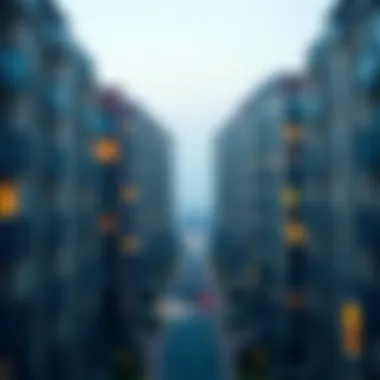
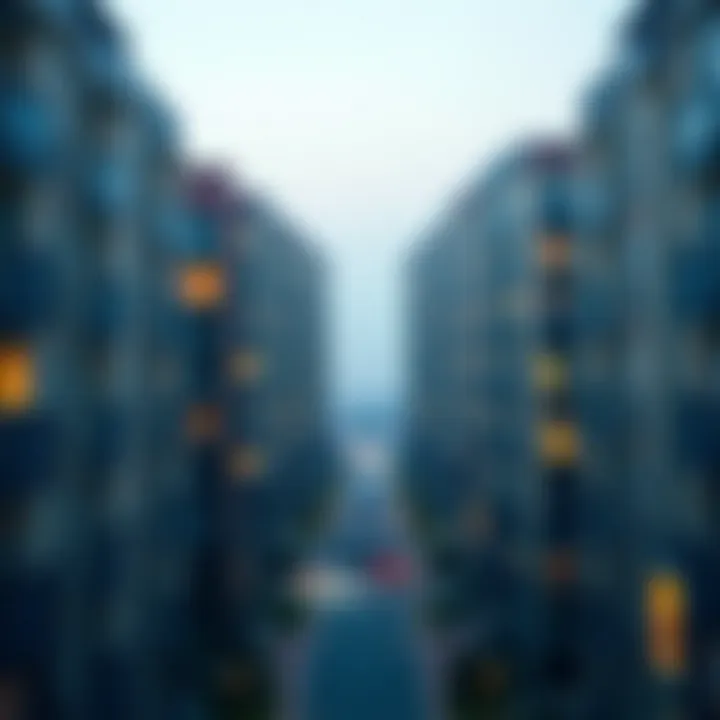
Intro
In the heart of Dubai, Zayed housing stands out as a notable aspect of the emirate's real estate tapestry. Rooted in a vision that melds tradition with modernity, this unique housing style reflects not only architectural significance but also a deeper cultural narrative. As the UAE continues to evolve, understanding the dynamics of Zayed housing becomes crucial for investors, homeowners, and anyone keen on the intricacies of Dubai's property market.
Zayed housing originated during a time when the country was transitioning from a largely rural landscape to a bustling urban haven. This evolution included a meticulous focus on creating homes that address the needs of a rapidly diversifying population. Characteristics seen in Zayed housing—like open layouts, community integration, and environmentally sensitive designs—foster a sense of belonging and well-being, crucially reflecting the values of many Emiratis.
As we delve deeper, we will explore the salient features of this housing type, analyze prevailing market trends, and assess the investment opportunities that Zayed housing presents. For those contemplating entering this segment of the real estate market, whether as buyers, investors, or property managers, the insights shared in this article will be instrumental in navigating the opportunities and challenges alike.
Understanding Zayed Housing
Zayed housing represents a significant and multifaceted element of Dubai's real estate landscape. Understanding this unique category of housing is essential for investors, residents, and even policymakers, as it encapsulates not only the architectural innovations of the region but also the cultural and social dynamics at play.
One critical aspect of Zayed housing is its role in addressing the needs of a growing population, marrying modern design with the traditional values that characterize Emirati culture. Zayed housing projects are often seen as a response to the government’s commitment to providing affordable and sustainable living spaces, essential in a region where luxury often overshadows practicality.
The nuances of Zayed housing are rooted in its historical context. These homes are a direct result of Sheikh Zayed bin Sultan Al Nahyan's vision to enhance the living standards of citizens. Understanding this historical perspective informs current expectations and challenges. Moreover, it illuminates how these homes are not merely structures but embodiments of Emirati aspirations and resilience.
Benefits and Considerations
Benefits of Zayed housing include:
- Affordability: Designed to be accessible for a larger segment of the population, mitigating the housing crisis prevalent in luxury-dominated markets.
- Design and Architecture: The homes reflect a blend of modern and traditional styles, catering to the aesthetic preferences of a diverse demographic.
- Community Integration: They are built with the intent of fostering community, featuring parks, schools, and communal spaces that encourage social interaction and cohesion.
Yet, there are also considerations to keep in mind:
- Regulatory Challenges: Investors must stay updated with ever-evolving policies that govern Zayed housing, as these can affect project feasibility.
- Market Dynamics: As the market evolves, saturation might pose risks, necessitating a close watch on market trends and buyer preferences.
Understanding Zayed housing involves dissecting these layers of complexity. Doing so not only enhances knowledge of Dubai's housing offerings but also provides insights into investment potentials that align with socioeconomic trends in the region.
Historical Overview
Zayed housing has its roots deeply embedded in the vision of the late Sheikh Zayed bin Sultan Al Nahyan, who revolutionized the very notion of urban living in the UAE. The historical backdrop of these housing projects stems from a sincere desire to uplift living conditions for Emirati citizens. Following the establishment of the UAE in 1971, Sheikh Zayed emphasized the importance of creating homes that resonate with both the identity and aspirations of the people.
In the 1980s and 1990s, significant developments began to take shape, driven by the rapid urbanization of Dubai. The government launched initiatives to provide affordable housing solutions, resulting in extensive neighborhoods that reflect both contemporary needs and traditional aesthetics. Over time, Zayed housing became synonymous with quality living, instilling a sense of pride among residents.
Cultural Significance
Beyond their architectural and historical attributes, Zayed housing holds immense cultural significance. These homes are not simply physical spaces; they embody a way of life that balances modernity and tradition. Many Emiratis view their homes as enduring representations of identity and heritage, forming the backdrop to family gatherings and community celebrations.
The design of Zayed housing often features elements entrenched in Islamic architecture, such as intricate motifs and communal spaces. This cultural infusion enriches the living experience, turning houses into homes where familial bonds are nurtured. The neighborhoods typically include elements that reflect the local way of life, such as majlis (guest rooms), which are vital for social gatherings, thus reinforcing community ties.
In summary, the understanding of Zayed housing necessitates a comprehensive exploration of its historical roots and cultural implications. It is within this framework that investors and residents alike can appreciate the profound narrative woven into the fabric of Dubai's real estate scene.
For more insights on UAE culture and housing developments, you can check reputable sources like Britannica and Wikipedia.
Architectural Features
When exploring Zayed housing in Dubai, it's impossible to overlook the architectural features that define this unique landscape. These elements are not mere aesthetics; they embody the spirit of innovation and cultural diversity that Dubai is renowned for. The architectural significance of Zayed housing extends beyond its visual appeal—it plays a crucial role in shaping community identity and enhancing the way residents interact with their environment.
Design Elements
Design elements in Zayed housing showcase a harmonious blend of traditional and contemporary styles, echoing the rich heritage of the UAE while catering to modern living demands. The use of natural light is often prioritized, with large windows and open spaces that promote an airy feel. Roofs may feature intricate designs that pay homage to Islamic architecture, while materials like limestone and glass are commonly used to balance durability with sophistication.
These houses often incorporate courtyards, providing private, outdoor spaces where families can gather. This design not only fosters community bonds but also aligns with the UAE’s cultural practices surrounding family life. Moreover, many developments emphasize functionality without sacrificing aesthetics, making each home an efficient space for daily living.
"The mixing of traditional motifs with modern lines creates a narrative that reflects both the past and the future of Dubai."
A significant portion of Zayed housing also emphasizes adaptability. Homes are often designed to cater to various family sizes and structures. Investors and architects alike recognize that the flexibility in design must accommodate the evolving needs of families in this dynamic city.
Sustainability Practices
Sustainability practices within the architectural framework are becoming central to Zayed housing developments. As Dubai continues to strive for a green economy, integrating eco-friendly technologies has become a primary consideration in housing design. This includes the installation of solar panels and energy-efficient heating and cooling systems, making homes more environmentally responsible yet cost-effective in the long run.
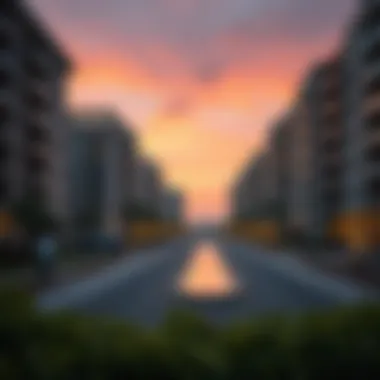

Many Zayed housing projects also emphasize water conservation tactics. Absorptive landscapes use native plants that require minimal irrigation, contributing to the preservation of water resources in the arid climate of the UAE. The use of recycled materials in construction further supports sustainability initiatives, attracting a growing number of environmentally-conscious investors.
Community Development
Community development is a cornerstone of Zayed housing, reflecting the interplay between architectural design and social interaction within Dubai. As a city that thrives on diversity, the Zayed housing initiative promotes an inclusive environment, reinforcing the fabric of community life in this glamorous metropolis.
Social Infrastructure
When examining the concept of social infrastructure, it’s crucial to grasp the basic elements that form the backbone of any thriving community. In Zayed housing, this infrastructure comprises not just physical entities like schools, mosques, parks, and health facilities, but it encapsulates a network of social connections and relationships among residents. The layout of these housing units is intentionally designed to foster interaction. For example, clusters of homes encourage neighbors to engage with one another, breaking down barriers often present in more isolated living conditions.
Moreover, communal spaces such as playgrounds or community centers serve as a nucleus for residents, significantly enhancing their quality of life. Families have places to gather, friendships develop, and collaborations among neighbors blossom as parents share insights on education or local events. This web of relationships ultimately leads to a more supportive environment, enabling residents to share resources and offer assistance to one another.
In terms of facilities, Zayed housing boasts a range of amenities aimed at promoting community health. The availability of nearby clinics, childcare centers, and recreational facilities resonates deeply with families, as they seek convenience alongside a social edge.
"A vibrant community fosters a sense of belonging. In Zayed housing, it’s not just about houses; it’s about homes where people connect."
Economic Impact
The economic impact of community development within Zayed housing cannot be overstated. Investments in social infrastructure yield significant returns not only for residents but also for the city as a whole. When people feel secure and supported within their environment, they are more inclined to establish businesses, thus cultivating a thriving local economy.
For instance, when residents band together to create local markets or service cooperatives, they not only increase their economic footprint but also reduce dependency on outside goods and services. This self-sufficiency can lead to lower living costs over time, which is exceptionally appealing for potential homeowners and investors looking at Zayed housing as a viable option.
The economic vibrancy is also reflected in job creation within the community. New businesses lead to employment opportunities for local residents, further enhancing their lifestyle and well-being. Additionally, as community development initiatives gain momentum, property values tend to rise, appealing to investors searching for promising returns.
In summary, Zayed housing offers an integrated model of community development that combines social welfare and economic sustainability. By focusing on creating holistic living spaces, it captures the essence of what it truly means to thrive together.
Investment Potential
The Zayed housing sector in Dubai presents a landscape ripe with possibilities for investors, driven by a mixture of historical cultural significance and modern architectural appeal. Recognizing its potential is essential not just for property experts but for anyone connected to the dynamics of Dubai’s real estate market.
One key factor that enhances investment viability is the shifting demand patterns within Dubai. As the city evolves, there is a distinct movement towards sustainable living. Properties in Zayed housing are designed with modern amenities and sustainable practices in mind, often leading to increased desirability among potential buyers and tenants. Investors aiming to enter this market can expect an upward trajectory in returns, particularly as sustainability becomes more than just a trending topic but a common expectation.
Additionally, Dubai's strategic location as a global business hub cannot be overlooked. The Zayed housing area benefits from proximity to key business districts, educational institutions, and recreational facilities. This locational advantage adds a layer of attraction for investors targeting both long-term gains and steady cash flow from rentals.
Market Trends
When considering market trends, investors must pay close attention to the demographic shifts occurring in Dubai. With a growing expatriate population, there's an increasing demand for adaptable housing that meets a variety of needs.
- Zayed housing is becoming increasingly popular among mid-range income earners who prioritize quality and affordability.
- There’s a palpable trend of urbanization as more families leave the outskirts for more centrally located housing options like those in Zayed.
- An uptick in interest from foreign investors, especially from nations looking to diversify their portfolios beyond traditional markets.
The market can be characterized as resilient, still bouncing back from periodic dips without losing its luster. Trends suggest that the real estate scene is likely to remain strong in the coming years, particularly in locations such as Zayed housing, where investment returns can be promising.
Opportunities for Investors
Investors seeking opportunities in Zayed housing will find several avenues worth exploring. Not only do these properties appeal to individual homeowners and renters, but they also catch the eye of institutional investors looking for larger-scale developments.
- Residential Development: Considering the increasing demand for new housing, there’s an opportunity in constructing modern residential units that cater to diverse buyer profiles.
- Renovation Projects: Investors can also think about acquiring older properties within the area and renovating them to meet today’s standards. The juxtaposition of traditional designs with modern facilities can attract buyers keen on preserving cultural elements while enjoying contemporary comforts.
- Rental Market: Zayed housing offers a robust rental market. Investors can capitalize on the influx of short-term renters, particularly during peak tourist seasons. For those long-term renters, Zayed housing offers great value and amenities that appeal to every day needs.
- Commercial Spaces: As the community grows, so does the potential for commercial investments. Establishing small businesses or retail outlets can complement the residential developments, creating a well-rounded environment that serves both residents and visitors.
In summary, the investment potential in Zayed housing is a compelling proposition for any investor. Beyond immediate returns, it reflects a sustained effort to integrate lifestyle, culture, and modern living—a trifecta that ensures investment in this area remains attractive for the foreseeable future.
Regulatory Framework
Understanding the regulatory framework surrounding Zayed housing is essential for anyone looking to navigate Dubai's complex real estate landscape. It serves as the backbone of property development, impacting everything from architectural designs to market accessibility. Without a proper regulatory structure in place, the very foundation of Zayed housing could crumble, leaving investors and homeowners in hot water.
The importance of this framework cannot be overstated. Regulations ensure that housing projects adhere to safety standards, sustainable practices, and cultural considerations. They guarantee that developments are not only efficient but also integrated into the existing community in a harmonious way.
Government Policies
Government policies play a crucial role in shaping the environment within which Zayed housing thrives. The Dubai governmental bodies regularly update these policies to adapt to market conditions and societal needs. Here are some key aspects of government policies related to Zayed housing:
- Regulation of Land Use: The government defines specific areas where Zayed housing can be developed. These zones help maintain balance between residential, commercial, and recreational spaces within the city.
- Financial Incentives: Government incentives, such as reduced fees or tax breaks, can ease the financial burden on developers. Such actions encourage more investments in Zayed housing, fueling its growth.
- Inclusive Housing Initiatives: Policies aiming at affordable housing assure that Zayed housing remains accessible to a broad demographic, promoting diversity within communities.
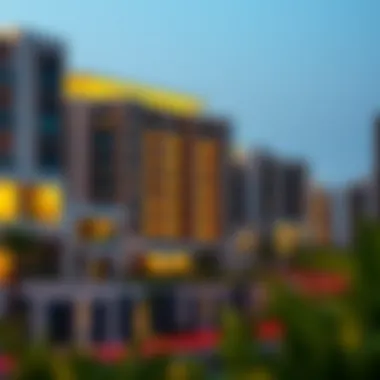
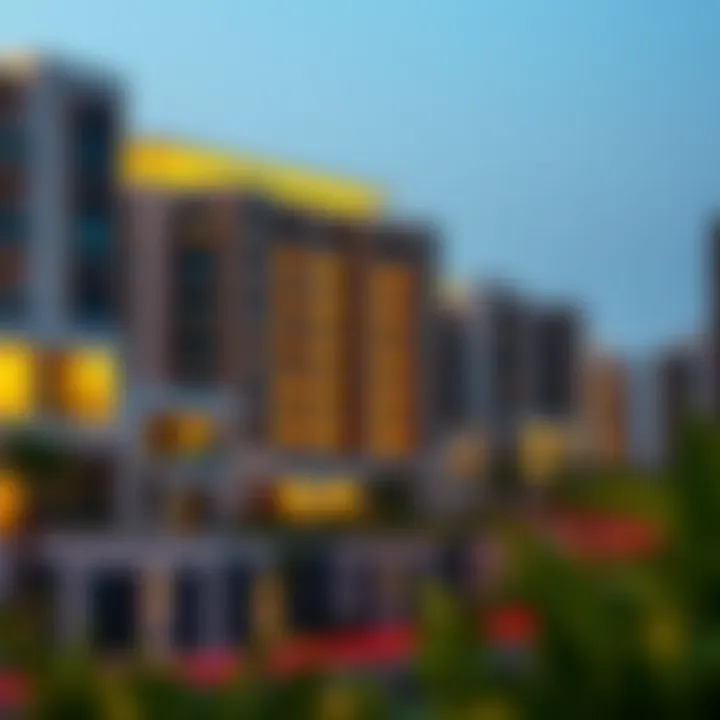
Overall, these policies create a landscape that benefits both developers and homebuyers, traditional or new. They encourage responsible growth while ensuring a steady influx of potential residents.
Licensing Requirements
Licensing is another cornerstone of the regulatory framework surrounding Zayed housing. Clear requirements help regulate who can participate in the market, ensuring that all stakeholders meet specific criteria. Here are some of the key licensing aspects:
- Developer Licensing: Developers must obtain a valid license to undertake projects. This license signifies that the developer has the necessary resources and is in good standing with the regulatory bodies.
- Contractor Registration: All contractors involved in the Zayed housing projects must register before commencing work. This ensures that all construction meets the local building codes and safety standards.
- Property Management Licensing: Once developed, Zayed housing communities require property managers to possess the correct licenses. This promotes professionalism and accountability in property management practices.
Obtaining the appropriate licenses may seem like a meticulous process, but it ultimately leads to the creation of high-quality housing that aligns with the cultural fabric of Dubai, mitigating risks for investors and ensuring satisfaction for future residents.
"A stable regulatory framework not only assures investor confidence but also enriches community life by ensuring ethical practices and high standards in housing developments."
For further details on regulations, it's beneficial to consult sources like Dubai Land Department or UAE Government Portal.
Zayed Housing vs. Other Housing Developments
The landscape of Dubai's housing market is not just a cluster of buildings but a vibrant fabric woven together by various developments, each with its own identity. When we put Zayed housing under the microscope, we find that it stands out remarkably in comparison to other housing developments. This section delves into how Zayed housing differentiates itself, focusing on its unique elements, benefits, and important considerations that set it apart.
Comparative Analysis
When analyzing Zayed housing against other developments like Jumeirah Village Circle or the Dubai Marina, several factors come into play.
- Cultural Resilience: Zayed housing often reflects the cultural essence of the UAE, incorporating elements that resonate well with national values and heritage. Other developments may prioritize luxury or modernity, sometimes at the cost of cultural significance.
- Affordability: Compared to glitzy towers and upscale gated communities, Zayed housing often offers more cost-effective options catering to a broader demographic, which includes locals and long-term residents.
- Community-oriented Design: Unlike other housing projects that may focus on individualistic features, Zayed housing frequently emphasizes communal spaces and social interaction. Parks, shared facilities, and community centers are thoughtfully integrated into designs.
- Quality vs. Quantity: There is an ongoing tendency towards market saturation in luxury housing. Zayed housing generally maintains a quality-standard approach, ensuring homes are thoughtfully constructed, even within broader affordability brackets.
Understanding these comparative aspects paints a clearer picture for prospective buyers or investors. In the race for real estate supremacy, Zayed housing maintains its ground not just through competition but by offering something unique that well aligns with the soul of the city.
Unique Selling Points
The unique features of Zayed housing play a crucial role in why it garners significant interest in Dubai's bustling market. These selling points could be summed up in the following:
- Strategic Location: Situated close to essential amenities such as schools, shopping centers, and healthcare facilities, Zayed housing benefits from its accessibility. It allows for an easier commute and a more convenient lifestyle.
- Local Engagement: Zayed housing encourages residents to engage in activities that promote local culture and community spirit. Events, festivals, and communal activities often pop up, fostering close-knit relationships among residents.
- Sustainability Practices: Many developments soak in modern sustainable practices, showcasing energy-efficient builders and promoting green living, making it an attractive option for environmentally aware buyers.
- Government Support: There’s a strong backing from the UAE government towards projects in Zayed housing areas. This support can include favorable financial assistance options for first-time buyers, making it an appealing choice for many.
The essence of Zayed housing is not merely in its structure but in the lifestyle it promotes.
When you weigh these unique selling points against competing developments, it’s evident that Zayed housing is not just about having a roof overhead; it’s about living as part of a community, thriving within a space that encourages growth and connection. For potential investors, the value proposition is clear; the blend of tradition with modernity, affordability with quality, is strikingly present in Zayed housing.
Challenges Facing Zayed Housing
The landscape of Zayed housing in Dubai presents unique challenges that have risen alongside its development. These hurdles are not only essential to understand but also play a critical role in shaping the success and sustainability of Zayed housing initiatives. Investors, real estate agents, and homeowners must grapple with these issues to ensure the continued viability of properties in this dynamic market.
Market Saturation
Market saturation refers to a point in the housing market where the supply surpasses demand. For Zayed housing, this presents a dual-edged sword. On one side, more options might appeal to buyers; on the other, it could lead to potential stagnation. Recent years have seen an influx of developments, contributing to a crowded market.
A rapid rise in projects means more units available in diverse price brackets. While this benefits buyers, it can challenge property values. A saturated market typically drives prices down, squeezing sellers and investors alike. It’s vital to monitor trends that could suggest when supply outpaces demand.
- Current Indicators of Saturation:
- Increased listing times for properties
- Growing inventory without corresponding buyer activity
- Escalation in discounts or incentives offered by landlords
As real estate agents and investors navigate this saturation, understanding market dynamics becomes paramount. Embracing strategies such as targeted marketing or value differentiation can help to mitigate the adverse effects of oversaturation and ensure that any investment truly pays off.
Maintaining Quality Standards
Maintaining quality standards within Zayed housing developments is another significant challenge. With numerous developers contributing to the housing landscape, inconsistency can emerge in construction quality and design. Homebuyers want assurance that their investments are sound, not just in terms of their financial outlay but also regarding livability and value retention.
Inconsistency in quality can have far-reaching effects, impacting everything from resale value to tenant satisfaction. Poor construction practices can lead to structural issues down the road, which homeowners might have to remedy at their own expense. To tackle this issue, here are some considerations:
- Regulatory Compliance:
To enhance quality assurance, it’s vital that developers adhere to stringent building codes and regulations. - Third-Party Inspections:
Engaging independent inspectors during and after construction can help to maintain quality checks. - Stakeholder Accountability:
Developers should be held accountable for their projects, with mechanisms in place for addressing grievances.
"Properly designed oversight can turn potential pitfalls into stepping stones for sustainable development within Zayed housing."
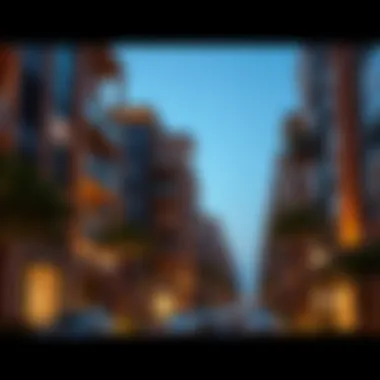

By addressing the challenges of market saturation and maintaining high quality standards, stakeholders in the Zayed housing sector can foster a resilient, thriving real estate environment that meets the needs of diverse populations. Understanding these dynamics is crucial for anyone looking to engage with this vibrant part of Dubai's housing landscape.
Future Outlook of Zayed Housing
The future of Zayed housing in Dubai carries significant weight not only for residents but also for investors and city planners. This section delves into developments that are likely to shape the future landscape of Zayed housing. The focus here will be on predicted market trends and technological advancements, both of which will play crucial roles in enhancing the living standards and sustainability of these dwellings.
As the population in Dubai continues to grow, with a mix of both residents and expatriates, the demand for quality housing will only increase. The Zayed housing scheme has the unique potential to cater to this diverse group, making the future outlook not just optimistic but vital for the overall real estate market.
Predicted Market Developments
In the coming years, several market developments are anticipated regarding Zayed housing. The emphasis will likely be placed on affordability and integrated community living. The following points summarize some expected trends in the housing market:
- Increased Demand for Affordable Housing: As more individuals and families seek residences, there will be an upsurge in the need for budget-friendly options. This might push developers to innovate in design and construction to keep costs down while maintaining quality.
- Rise of Mixed-Use Developments: Future Zayed housing projects may see a mix of residential, commercial, and recreational spaces. This strategy could create vibrant neighborhoods that encourage community interaction and support local businesses.
- Government Support: The local government is likely to continue its support through policies favorable to housing initiatives. This, combined with potential incentives for developers, could spur significant growth in the sector.
- Stability in Pricing: As the market matures, fluctuations in housing prices might stabilize, creating a more predictable environment for buyers and investors alike.
In essence, these developments could not only address the housing demand but also enhance the quality of life in the community.
Technological Innovations
Technology is rapidly changing how people live, work, and invest in housing. In terms of Zayed housing, the adoption of innovative technologies will significantly influence future sustainability and comfort. Here are some anticipated technological trends:
- Smart Home Features: With the rising trend of home automation, it is likely that many Zayed housing units will incorporate smart technologies. Features such as smart thermostats, lighting systems, and security measures can enhance the living experience while promoting energy efficiency.
- Sustainable Building Materials: As environmental concerns become more pressing, the use of eco-friendly materials in construction will likely gain momentum. This could include recycled materials and designs that minimize environmental impact.
- Enhanced Connectivity: The future may bring improved internet infrastructure within Zayed housing projects, facilitating remote work and enhancing residents' access to services.
- Construction Technology: Advances in construction methods, such as prefabrication and modular homes, could streamline building processes, reduce waste, and decrease the time taken to bring new housing units to market.
"The integration of technology not only enhances the comfort and security of homes but also plays a part in the energy efficiency sought by modern homeowners."
In summary, both predicted market developments and technological innovations highlight a positive trajectory for Zayed housing. As these elements come into play, they promise to shape vibrant communities that can adapt to the evolving needs of their residents. Keeping a close view on these factors will undoubtedly offer sharp insights for investors, homebuyers, and other stakeholders in Dubai's dynamic real estate market.
Personal Experiences of Residents
Understanding the lived experiences of those within Zayed housing is crucial for a myriad of reasons. These perspectives not only offer insights into the real life dynamics of community living but also reflect how individuals relate to their surroundings in this unique housing format. The way people experience their homes can reveal both the strengths and weaknesses of Zayed housing, informing future developments and offering valuable data for real estate investors and policymakers alike.
Diverse Perspectives
Residents of Zayed housing come from various backgrounds, contributing to a rich tapestry of perspectives. Each resident's experience can vary drastically based on factors like family size, socioeconomic status, and personal expectations.
For example, a young family might cherish the open spaces and parks for their children to play, seeing value in community events and social gatherings organized regularly. In contrast, a single professional may prioritize proximity to work and vibrant nightlife, finding the available amenities lacking in terms of entertainment options.
- Family-Oriented Views: Many families express appreciation for the community-centric design, which fosters a strong sense of neighborhood. They often emphasize the importance of safety and accessibility to schools and healthcare.
- Single Professionals: Conversely, younger demographics may feel that the lack of diverse nightlife options plays a significant role in their overall satisfaction. They often yearn for more modern entertainment facilities and nearby dining options.
In discussions on forums like Reddit, these differing views frequently surface, highlighting how Zayed housing adapts—or fails to adapt—to the needs of its residents. Moreover, these individual narratives can directly impact future housing initiatives.
Quality of Life Assessments
The quality of life in Zayed housing is often gauged through a mix of subjective feelings of safety, community involvement, and accessibility to essential services. Residents might describe their experiences in various terms, which can be broadly categorized into several components:
- Safety and Security: Many feel secure in their neighborhoods, citing low crime rates as a contributing factor to their contentment. The design of the estates often incorporates safety features that help in this area.
- Community Engagement: Events such as local festivals or clean-up efforts can foster a sense of belonging. Residents often report that engaging in community activities enhances their overall happiness and connection with neighbors.
- Accessibility: The reach to schools, healthcare centers, and shopping areas affects residents’ satisfaction. Those who find such amenities readily available often feel more fulfilled and connected to their community.
- Amenities and Maintenance: High-quality facilities and regular maintenance services play a critical role. A well-maintained environment tends to uplift the spirits of residents significantly.
"A place that feels like home is more than just walls; it’s about the stories shared, the friendships fostered, and the moments cherished," a resident commented, underlining the essence of community living in Zayed housing.
These assessments can guide real estate professionals in understanding what current residents appreciate or find lacking in Zayed housing. Such knowledge can inform property managers and investors looking to enhance their offerings or mitigate potential issues.
Epilogue
In the ever-evolving landscape of Dubai’s real estate, understanding the dynamics of Zayed housing is not just relevant; it's crucial. This segment sheds light on the intricate weave of factors that contribute to the significance of these housing developments. The essence of Zayed housing lies not only in its architectural splendor but also in its ability to nurture community ties and offer a conducive living environment.
The importance of this topic is underscored by several key aspects:
- Cultural Integration: Zayed housing stands as a testament to how housing can mirror the cultural identity of Dubai. It isn’t merely about placing bricks and mortar together; it’s about creating spaces that resonate with the rich heritage and modern aspirations of the emirate.
- Economic Viability: For investors and developers, the Zayed housing market offers unique opportunities. With a growing population and demand for communal living, properties in this sector have shown promising returns on investment, making it a focal point for prospective buyers and real estate agents alike.
- Sustainability Focus: As the world shifts towards more sustainable practices, the initiatives taken by Zayed housing developments in terms of eco-friendly designs and sustainable living raise the bar for future projects in Dubai. This alignment with global trends is not just beneficial but necessary for long-term viability.
"Understanding Zayed housing is pivotal; it reflects not only the past of Dubai but also guides its future."
These elements, combined with an understanding of community needs and the regulatory environment, create a comprehensive picture that emphasizes the relevance of discussing Zayed housing in depth. The insights provided herein serve as a valuable resource for anyone looking to navigate Dubai's dynamic property market.
Key Takeaways
- Historical Relevance: Zayed housing has deep roots, connecting Dubai's past to its present, which can guide future developments.
- Investment Insight: The ongoing trends in Zayed housing illustrate potential for lucrative investments in a growing market.
- Community Focus: The developments prioritize social infrastructure, making them attractive for families and community-oriented individuals.
Final Thoughts
Ultimately, the narrative around Zayed housing encapsulates a broader story about Dubai itself—a city that continues to evolve while holding onto its core values. Whether you are a real estate agent looking for the next big opportunity or a homebuyer searching for a place that feels like home, the dynamics of Zayed housing offer a wealth of insights into its multifaceted nature. The conversation does not end here; ongoing engagement and research will be vital in navigating the complexities of this vibrant sector. This article acts as a starting point, providing foundational knowledge and encouraging further exploration of Dubai's fascinating real estate tapestry.







